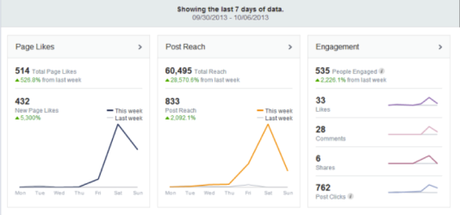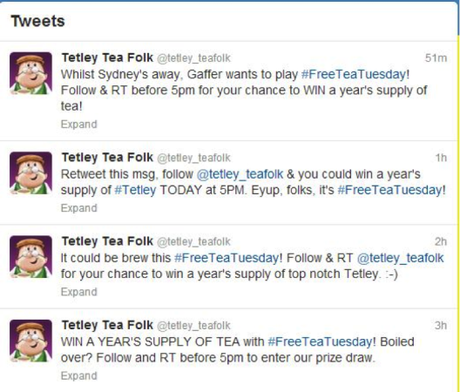
Photo credit: Jakob Montrasio (Flickr)
- Be prepared to pay to play
- Target your audience with advertising
- Build a base of content
- Have a content plan
- Run some competitions
- Share other people’s work
The following is a guest post by Chris Smith. His bio is at the end of the article.
So, you’ve set up a Facebook page for your brand, you’ve made a couple of posts and you’ve waited patiently to ‘go viral’. Yet your ‘like’ counter sits at a steady 10 (your wife, one of your children and a couple of colleagues). Your engagement statistics can’t even be described as such because you’ve had precisely no engagement whatsoever. Worst of all, you’ve got a manager breathing down your neck because you’ve got nothing to show for your efforts.
This isn’t how it was supposed to go, was it?
Building a social media presence from nothing is extremely difficult unless you boast the kind of brand name that people are already well acquainted with; Coca-Cola, McDonald’s and so on.
Part of the issue is that social media marketing, to begin with, is a bit of a ‘chicken and the egg’ scenario. Great content is all well and good, but if there’s no audience there to see it, it might as well not exist. On the flipside of that, having 20,000 likes and nothing to engage your audience with will see those 20,000 people scarper pretty quickly.
The other part of the issue is misconceptions surrounding social media marketing. While there’s no doubt that content can go viral, the idea that it does so purely from someone finding it and sharing it is a myth. In actuality, most ‘viral’ content is supported by a hefty marketing budget and friends in high places. Therefore, the idea that social media is ‘free’ is an illusion.
Fortunately, building an audience and getting results from social media is still relatively easy. All you need is a budget, some great content, a creative mind and a head for planning. Here are some of the steps you’ll need to build up your like counter, increase engagement and improve your ROI.
Be prepared to pay to play
As previously alluded to, the idea that social media is a free form of marketing is a myth. For the first few months, you’ll need to supplement your content efforts with an advertising campaign – this could be targeted advertising or specific post/Tweet promotion. Either way, you’ll have to be prepared to pay.
That doesn’t mean you need to dedicate your entire marketing budget to social media advertising, however. A few hundred dollars and some well targeted ads should more than suffice to begin (although it’s important to note that you might experience diminishing returns the larger your audience gets and you might need to spend a little bit more!)
I’ve recently taken on a client for whom we didn’t advertise for a week, relying simply on content. Our new likes? 0. The following week, we invested $200 in Facebook advertising. The results? Well…see for yourself:

Great content is a superb way of growing your audience, but you need an initial audience to share it before you can even think of growing your following this way. Advertising is the quickest way to get that audience.
Target your audience with advertising
Facebook advertising is by far the easiest way to build your audience in the early days; not only does it give you direct access to a significant amount of users, but it also allows you to target users with specific interests related to your products.
The client I talked about above sells premium wood flooring, so our advertising was tailored towards people with an interest in ‘home’ and ‘interior design’. Given the cost of the products the client sells, we also targeted people over the age of 25 as they are more likely to own their own home and be more affluent.
Targeting is a great way to build a relevant audience straight off the bat; once you’ve got your initial audience, you should be able to lower your advertising budget and grow more organically.
Build a base of content
So, you’ve got your audience – now what?
It’s time to start engaging them with that content I was talking about earlier. Ah, you don’t have any yet…
Great content takes time to plan and time to produce; time that you don’t have, given the relative fickleness of users online. If you can’t engage new audiences gained through likes immediately, you’re guaranteed to lose a few of them straight away.
The obvious way to combat this is to have some content prepared before you launch your social media campaign. This could be a series of blog posts, some image content, a video – whatever suits your business best. With your content complete, you can come up with a plan of action to share it and keep your brand new audience engaged!
Have a content plan
Social media by its very nature is reactive, which means that being on the pulse and being able to react to situations quickly and effectively is essential. However, you’re bound to hit a slow day every once in a while – in fact, depending on the industry you work in, you might have to generate the majority of activity yourself.
Having a content calendar helps to account for these slow news days and keep your audience engaged regardless of what’s happening news-wise. A content calendar lists the type of content you’re going to produce, when you’re going to promote it and how you’re going to promote it; you can find a great (free!) example of a content calendar on Hubspot.
Of course, you’ll need to be flexible with your content calendar; ignoring a major news story because you’ve had a blog post planned for four months definitely isn’t a good idea!
Run some competitions
For all the engagement that a thoughtful blog post might create, nothing quite gets people engaging with a brand like free stuff. Competitions are by far the easiest way to grow your following quickly and aren’t too hard to set up either; all you need is a great prize, a way to run the competition and a promotion plan.
The way you run a competition will largely depend on the platform you’re planning to utilize. Facebook competitions, due to Facebook’s T&Cs, tend to work best on dedicated apps. Contrary to popular belief, an app doesn’t cost that much to develop at all; Thunderpenny, for example, is largely free and only requires a subscription fee if you want to use elements such as a contact form. It’s easily customizable and even the least web savvy of marketers will be able to use it.
On Twitter, RT competitions are the best way of running a giveaway. Not only does an RT act as an entry, but it also gets people sharing your brand’s page with a minimal of effort. A good example of this is Tetley Tea’s (yes, I’m a British person talking about tea…) ongoing #FreeTeaTuesday campaign, which I see crop up in my Twitter feed multiple times every week.

Keep in mind that you’ll need to have a plan of action following the competition, a little something to soothe the spirits of the unlucky few who didn’t win your grand prize. This could be another competition, a series of blog posts or even some discounts!
Share other people’s work
It’s incredibly easy to get caught in the trap of talking solely about your brand on social media, but this isn’t the best way to grow a following. A better plan is to share content from other websites and blogs. Not only does it provide your audience with some engaging content without you having to dedicate hours to its creation, but it also acts as encouragement for said blogs and websites to share your content too. Essentially, you’re tapping into their audience – all for a single share!
So those are just a few of the ways you can grow your social media presence from nothing, and hopefully maintain that audience too. It’s not easy and I can almost guarantee something will go wrong along the line (a disgruntled customer, negative reaction to content, etc.). Stick at it, however, and you should start seeing results.
Chris Smith is a social media consultant and copywriter at Fluid Creativity, a digital agency specialising in online marketing. When not working, Chris annoys his neighbours with his bass guitar or goes square-eyed from playing too many video games.

